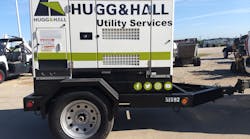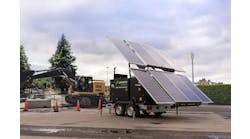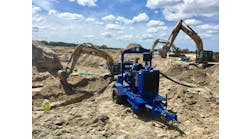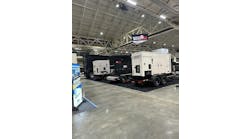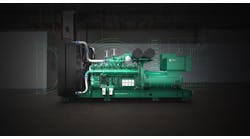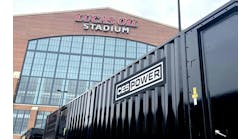How does a forklift distributor established in 1956 grow to become a respected equipment rental company throughout Arkansas, Oklahoma and Louisiana? Simple. It’s in the details.
“We focus on diving in and finding out exactly what the customer needs so we can provide a tailor-made rental solution” says Spencer Hale, sales manager Utility Services Division at Hugg & Hall.
That philosophy of customizing equipment rentals for the exact specifications of an application — instead of generally meeting a need — informs the day-to-day rental and equipment sales at all 12 Hugg & Hall locations across the South. The company offers a wide range of construction, industrial, heavy, aerial, material handling, portable power, temp HVAC, and light equipment.
Shifting its methods to be more intentional in the rental process helps Hugg & Hall provide customers with better solutions. “In the past if a customer came in asking for a generator, we’d simply rent them one large enough to handle whatever they needed, which sometimes resulted in an oversized generator on a site,” said Hale. “Now, we work with them to find out exactly what their job site or special event power needs are and right-size the generator to those specs.”
The team asks a variety of questions to drill down to the customer’s power requirements, such as “What voltage will you be needing, what is the startup amperage, and running amps of the load?” and “Do you plan to add any extra load to the generator?”
This method has proven successful for both the customers and Hugg & Hall. “Setting up the customer with the right-sized generator from the beginning leads to less confusion and unnecessary wear and tear on the equipment in the long run,” says Hale.
Moving away from the one size fits all mentality can create opportunities for improved operations. Strategically placing several generators around the job site to provide the necessary power when and where it’s needed ultimately saves run time, prevents downtime and gets the job done in a timely manner.
Breaking away from the tradition of putting one large generator on the site also offers crews more flexibility. Having multiple small generators allows a crew to distribute power around the job site to exactly where it’s needed, cutting down on long runs of cable while still providing effective power across the site.
Partner up
Hugg & Hall rents and sells equipment to customers with a wide spectrum of applications. “We work with everyone from industrial plants, construction crews, to special event organizers,” says Hale. “A customer might have a solid background on how to operate a generator or they may have no experience at all.”
This customer variety means working with manufacturers that offer a full portfolio of easy-to-operate generator ranges is key to executing Hugg & Hall’s right-size philosophy.
While customers may prefer to rent an oversized unit, assuming it will be capable of powering all the equipment on their job site and more, they aren’t taking into consideration the consequences of not running a full load on an oversized generator and added fuel consumption.
Asking the customer about their specific power needs allows Hale to rent several smaller units, such as Allmand’s Maxi-Power 25, versus one large unit to prevent wet stacking and keep the job site moving or special event up and running.
“With the 25, you just start it up and let it go. It’s a good generator for the types of customers I rent to — the experienced and the inexperienced,” said Hale. “It’s a workhorse generator for us.”
Right this way
Right-sizing generators has significantly helped Hugg & Hall cut down on avoidable maintenance issues, such as wet stacking. Tier 4 engines use diesel particulate filters to limit the amount of particulate matter that is emitted through exhaust. The use of these filters, however, means that if you don’t run a generator at a nominal load, those particulates begin to block the mesh and can cause airflow to stop. That leads the generator to shut down and regenerate.
An hour of regeneration translates to a lost hour of productivity for the customer — not to mention an hour of unnecessary wear and tear on the generator. Reducing avoidable wear can also extend the rental cycle of the generator for Hugg & Hall.
“When customers get out there and have a right-sized generator that won’t give them any issues, like the Allmand Maxi-Power, I feel confident they’re going to have a good experience,” says Hale.
Ensuring customer needs are met, no matter how small, is what Hugg & Hall is all about. Afterall, the devil is in the details.
______
Becky Fellows is marketing manager, Allmand Bros.
